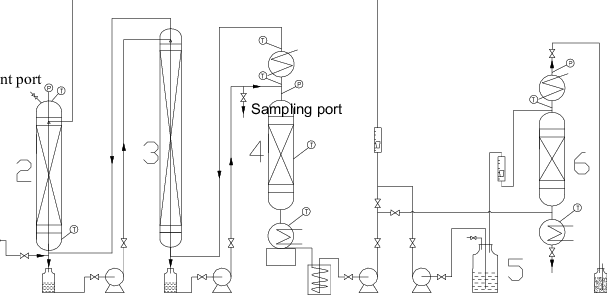Blog - Aure Chemical
Boron Trifluoride–Anisole Complexes: Stability & Industrial Applications
Hey chemistry buffs and curious readers! If you've ever wondered how tiny molecular partnerships can power big industrial processes—or go wrong with just a drop of water—this post is for you. We're diving into the world of boron trifluoride (BF₃) and its complex with anisole, a compound that's like the dynamic duo in a superhero story. But like any good tale, there's a villain: water. Let's explore why this reaction matters, from lab basics to real-world uses.
1. Introduction: Why Study BF₃–Anisole?
Imagine BF₃ as a needy friend who's always looking to borrow electrons—that's because it's a strong Lewis acid, hungry for electron pairs to fill its empty orbital. It teams up with donor molecules like anisole (a fragrant compound from anise seeds, chemically C₆H₅OCH₃) to form a stable complex. This BF₃–anisole adduct is like a portable battery for boron chemistry: handy but super sensitive to moisture.
Why care? In industries, it's key for things like separating boron isotopes (more on that later) and acting as a catalyst. But water crashes the party, breaking things down and creating hazards. This article unpacks the reaction with water, the products formed, stability issues, and safety tips—essential for anyone handling these chemicals.
2. Structure and Nature of the BF₃–Anisole Complex
At its core, the BF₃–anisole complex is like a molecular handshake: the boron in BF₃ grabs onto the oxygen atom in anisole, forming a dative bond where anisole "donates" its lone pair of electrons. Think of it as BF₃ being the empty cup and anisole pouring in some electron "coffee" to stabilize it.
Anisole's aromatic ring (that benzene-like circle) tempers this donation, making the complex more balanced—not too reactive like BF₃ with simple ethers, nor overly stable like with amines. It's just right for controlled reactions, unlike BF₃–ether complexes that might fizz out faster or BF₃–amine ones that cling too tightly.
3. Reaction of BF₃–Anisole with Water
Water is the ultimate party pooper here. When BF₃–anisole meets moisture, it doesn't just get wet—it decomposes in steps, like a slow-motion breakup.
First, water muscles in, replacing anisole to form BF₃·H₂O. Then, more water leads to hydrolysis, producing fluoroboric acid (HBF₄) or boric acid (H₃BO₃), with hydrofluoric acid (HF) as a nasty byproduct. Anisole gets kicked out, free to float away.
The simplified reaction? BF₃–anisole + 3H₂O → H₃BO₃ + 3HF + anisole. In humid air, HBF₄ often forms too. This happens even with trace humidity, sped up by warmth or solvents. Signs? Fuming smoke, color shifts, or a sudden acidic bite—like when your coffee turns sour from bad milk.
4. Effect of Hydrolysis on Complex Stability
Hydrolysis is like rust on metal: it erodes the complex's strength. Water exposure strips away BF₃'s Lewis acidity, breaking the structure and shortening shelf life. Even a whisper of moisture shifts the balance toward breakdown, unlike thermal stress where it might hold up better in dry heat.
Compared to BF₃–ether complexes, BF₃–anisole fares okay but still needs kid-glove handling: store in anhydrous (super-dry) spots, sealed in ampoules under inert gas. In industry, this instability can tank efficiency, like in isotope separation where purity is everything.
5. Industrial and Research Applications
From lab benches to factories, BF₃–anisole shines in boron isotope separation—splitting boron-10 from boron-11, crucial for nuclear reactors (boron-10 absorbs neutrons like a sponge). It enables chemical exchanges or gas-liquid equilibria, but only if kept bone-dry; water ruins the precision.
boron-11, crucial for nuclear reactors (boron-10 absorbs neutrons like a sponge). It enables chemical exchanges or gas-liquid equilibria, but only if kept bone-dry; water ruins the precision.
Beyond that, it's a controlled BF₃ "release valve" for organic synthesis, a catalyst starter for reactions like alkylation (building bigger molecules) or polymerization (making plastics). It's also a safe way to transport BF₃, taming its wild side until needed.
6. Hazards and Safety Considerations
Don't underestimate the dangers—hydrolysis spits out toxic, corrosive stuff like HF (which etches glass like acid rain on statues) and HBF₄ (a strong acid that burns skin). BF₃ itself is a fuming gas that irritates lungs and eyes, reacting violently with water.
Safety first: Work in a dry, inert atmosphere (like nitrogen gas), use PTFE-lined gear to resist corrosion, and ventilate well. Wear gloves, eye shields, and respirators. For spills, neutralize with bases like lime, and dispose per regulations—think of it as handling a live wire, not a toy.
7. Summary and Key Takeaways
Wrapping up: BF₃–anisole is a handy Lewis acid-base team-up, but water triggers hydrolysis, forming corrosive acids and zapping its usefulness. Moisture control is non-negotiable for stability, especially in isotope work. Grasp this, and you'll handle it safely while boosting performance.
Here's a quick table recap:
| Aspect | Behavior | Industrial Implication |
| Structure | BF₃–O coordination | Stable in dry state |
| With water | Hydrolysis to HBF₄, H₃BO₃ | Loss of activity |
| Stability | Decreases with humidity | Storage challenge |
| Hazards | HF, HBF₄ corrosion | Safety protocols needed |
Looking for a reliable bulk supplier of Boron Trifluoride Anisole Complex (BF₃-Anisole)?
Aure Chemical provides Premium Boron Trifluoride Anisole Complex (BF₃-Anisole) raw materials.
View ourBoron Trifluoride Anisole Complex (BF₃-Anisole) product page
